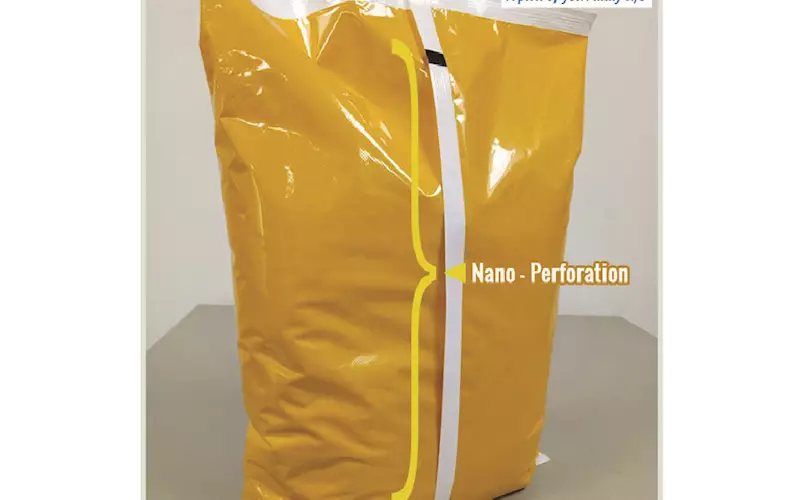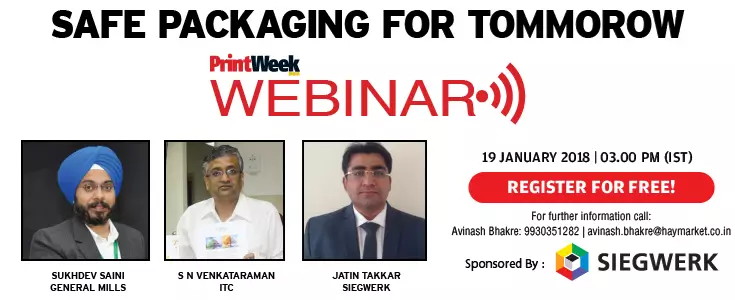Uflex focuses on resource optimised packaging for Indian staples
Noida-based Uflex, in an endeavour to extend the very use of flexible packaging, is particularly paying a lot of emphasis on developing resource optimised packaging for essential staples like pulses, wheat flour, sugar, salt and oil.
15 Jan 2018 | By Rahul Kumar
Jeevaraj Pillai, joint president, packaging and new product development, Uflex, said, “Flexible Packaging sector in India will get the real boost when high volume (bulk) commodity food items like pulses, wheat-flour, sugar, salt and oil are marketed in packaged form. In India, almost 80-85% of unbranded food products are still sold loose without pre-designated packaging. With steadily increasing demand from urban consumers for branded high volume commodity food items, we are now getting a lot of enquiries from popular food brands for developing cost-effective packaging particularly for the essential staples category. We have recently developed a two-ply laminated packaging for wheat flour comprising a specialised Polyester (PET)/ specialised Polyethylene (PE) structure.”
Two rather dichotomous situations had to be addressed in manufacturing this packaging solution for wheat-flour (in the five-kg segment).
In order to restrict the pricing within 2.5-3% of the total MRP of the 5 kg wheat flour pack, the company had to optimally down gauge the packaging. Down gauging cannot come at the cost of functionalities and strength of the pack. Therefore to ensure that the wheat-flour packaging is sturdy enough with good mechanical properties to withstand the weight of the product being packed as well as to sustain the rough supply chain conditions, Uflex adopted a three-pronged approach.
“We modified both the polyester film and the sealant PE layer to optimise the overall characteristics of the packaging. Both the layers were rendered special high dart impact resistant to pass five-drops from 1.2m height as per the ASTM standards. We were able to reduce the thickness of the PE by almost 38% which substantively down gauged the overall packaging. This reduction makes the packaging light-weight/resource optimised and far more sustainable than its erstwhile version,” Pillai said.
The third and the most important modification has been registered nano-perforation on the laminate for which, the company installed a new machine with the most contemporary software.
“The nano-perforation helps dispelling the air while filling the flour inside the pack and also ensures that no infestation by mites and other micro-organisms takes place resulting in spoilage of the wheat-flour packed inside. In fact, the perforations are designed just enough for removing the air and restricting the passage of mites. Further, the nano-perforation on the pack also imparts anti-skid properties to the bag paving way for easy stacking all through the supply chain,” he concluded.
Ashok Chaturvedi, chairman and managing director, Uflex, said, “Resource optimised packaging for bulk commodities, particularly high consumption commodity food items as the name suggests, entails significant reduction at source. Since the target market consumption of this product category in a country like India isfairly large, resource optimised packaging for this segment beholds tremendous potential in overall reduction of polymer consumption. I am glad that my packaging engineers have been able to develop this packaging solution which is light-weight, sustainable and significantly contributes towards extending the use of flexible packaging for this volume driven food category. Considering that the per-capita packaging consumption in India is just about 4.5 kg currently, whereas that for countries like Taiwan, Germany and US is around 19, 50 and 71 kg respectively, resource optimised packaging for essential Indian staples is a tangible and definitive step in making flexible packaging a more popular option in India.”















 See All
See All